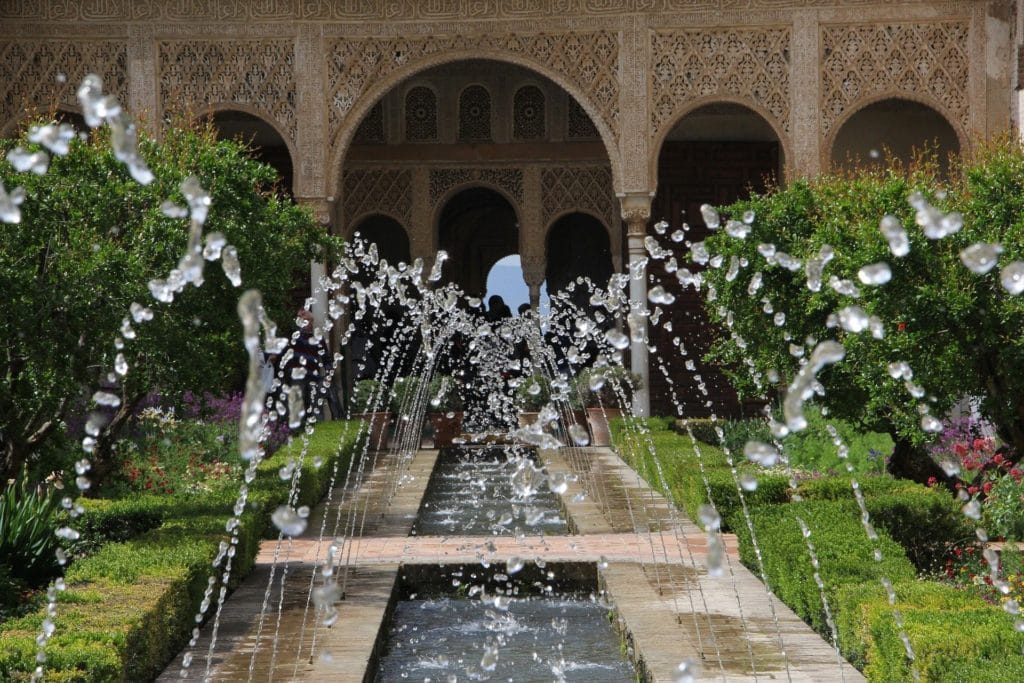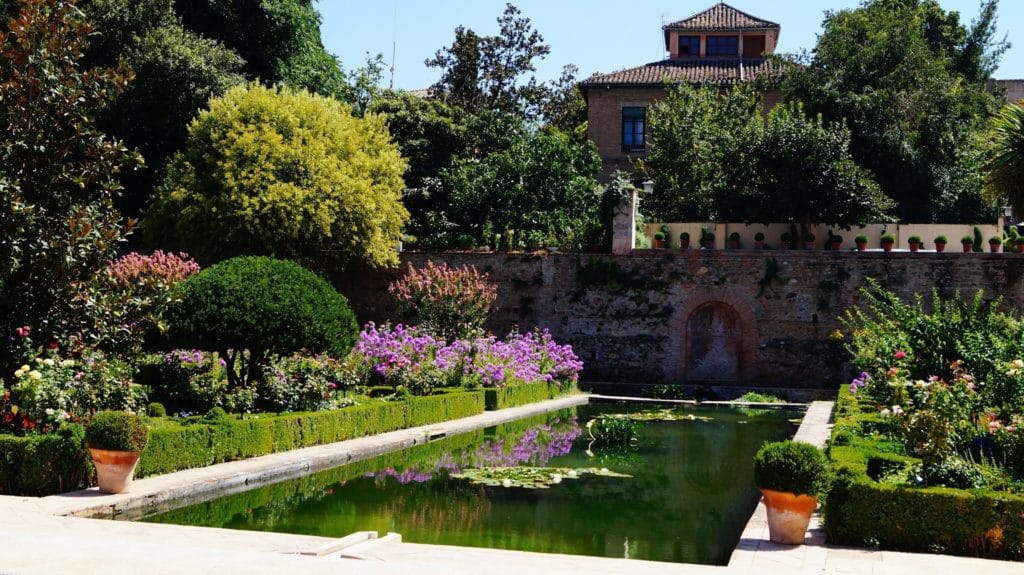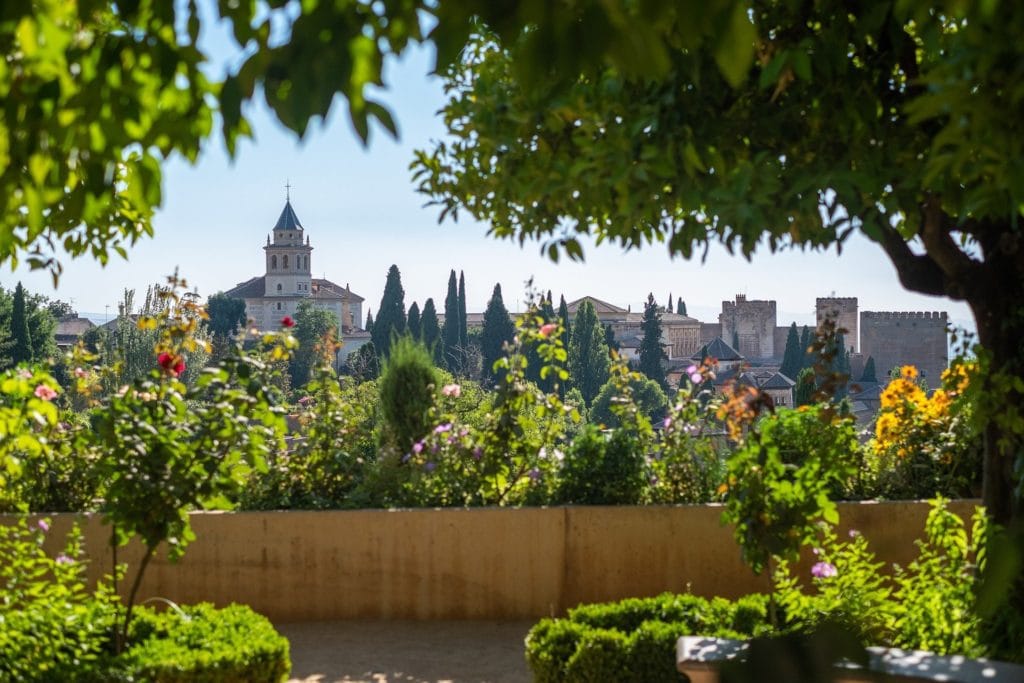Oxfordshire Mind’s Physical Activity Team are offering a weekly ‘virtual walk’ this week the team are exploring the Alhambra palace.
Hello, walkers. Today we are travelling to the Spanish city of Granada , to visit one of the most beautiful places in the country, if not the entirety of Europe; the Alhambra palace.
The Alhambra is a reminder of a time, centuries and centuries ago, when this region was a part of the Muslim world. In the 8th Century, much of Spain and Portugal was conquered by troops from North Africa, and for most of the Middle Ages, Muslims, Jewish people and Christians lived side by side, creating an era of unprecedented flowering of learning and cultural fusion. Unfortunately, however, this wasn’t to last, and eventually the Christian kingdoms to the North began a slow pushback, taking back the country piece by piece. Finally, the area around Granada was the only remainder of Muslim Spain’s former glory. The Muslims called the Spain that they ruled Al-Andalus, which is why this region is still called Andalusia today.
It was here, sheltering from the heat among the palace’s airy halls, shady colonnades, and lush, sweet-smelling gardens, that the rulers of this last kingdom held their court. Poets called the Alhambra ‘a pearl set in emeralds’, referring to the way it nestles amongst the olive green of the trees surrounding it, sprawling across the mountains overlooking Granada. Back then it would have been whitewashed, so the description would have been fitting , but nowadays the buildings are their natural reddish colour which comes from the local clay from which they are made . That’s actually where the name Alhambra comes from- it derives from the Arabic for ‘the red fortress’
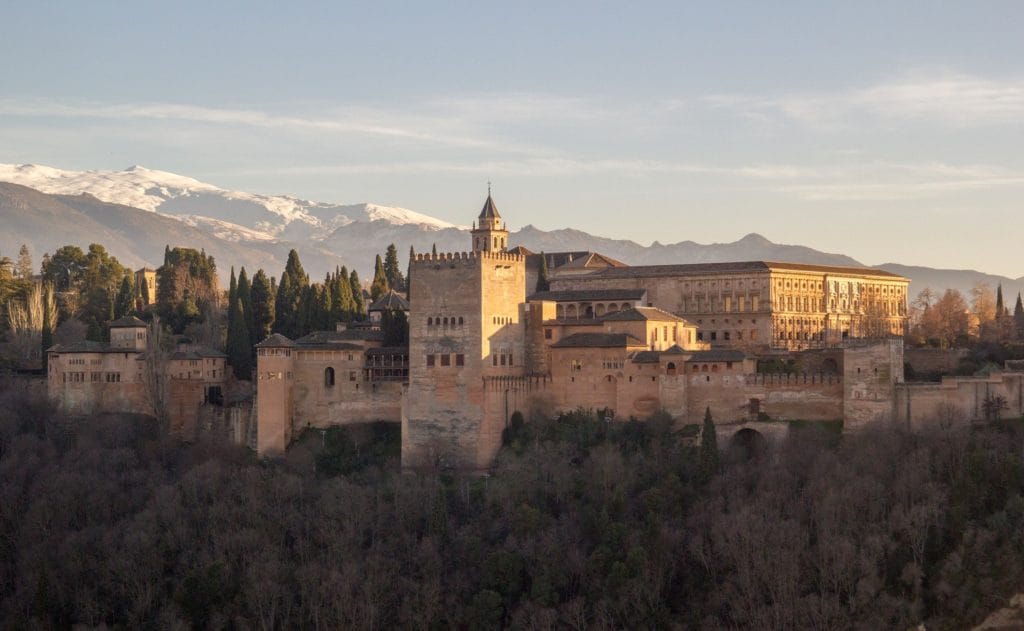
Let’s try to imagine some of the history that might have taken place here as we go through our tour today. We enter the complex through the Alcazar, the original fortress which was the oldest bit of the Alhambra, and make our way towards the entrance to the central part of the complex, where the palaces are. We hurry slightly to make sure we make the slot on our ticket. They’re very strict about the number of visitors they allow in to this section of the Alhambra at one time, and if we are late we could well miss our chance to see them.
Thankfully, we arrive with a couple of minutes to spare and are admitted to the palaces. The first place we enter is called the Court of the Myrtles, a courtyard dominated by a long rectangular pool of bright green water which contrasts sharply with the white marble surrounding it. If you peer into it, you can see goldfish swimming in those emerald waters, their brightly- coloured scales occasionally shimmering as they catch the light.
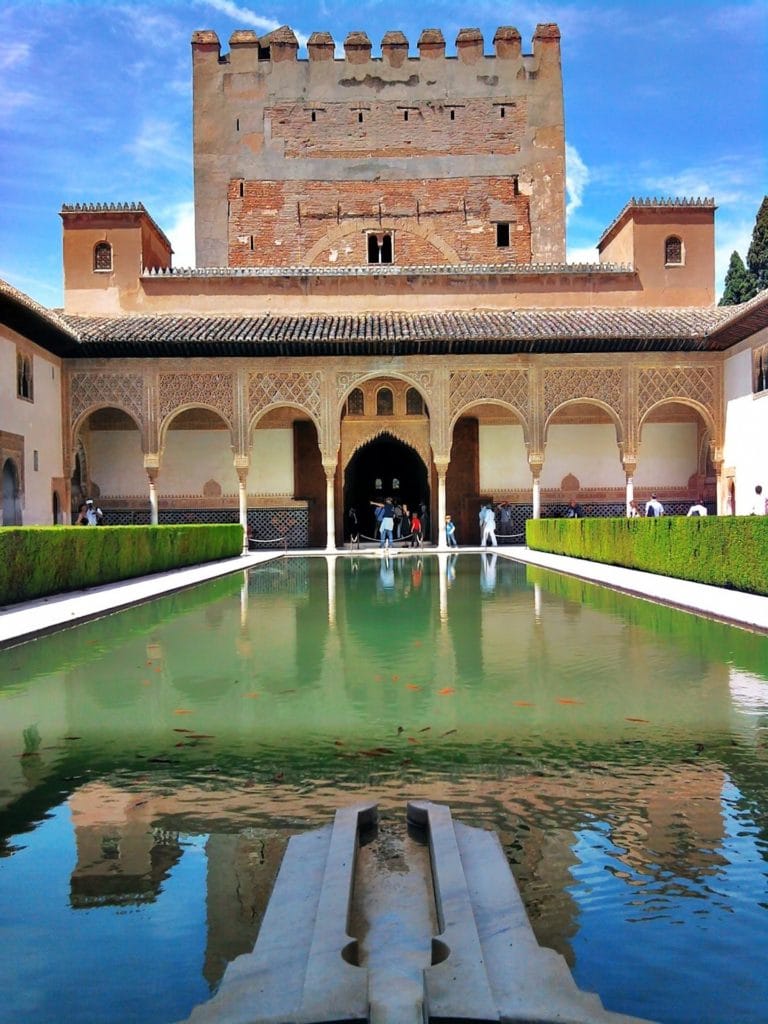
We duck inside the tower that dominates one end of the courtyard, walk through a couple of archways, and find ourselves in a huge hall, the Hall of the Ambassadors. This was the throne room, where the sultan received official visitors, and every bit of it is designed to leave visitors with a lasting impression of the might and wealth of the Nasrid dynasty. Practically every inch of the walls is decorated with calligraphy; poems in praise of god, verse extolling the virtues of the sultan, endless repetitions of the motto of the dynasty: ‘only God is victor’. But the real highlight of this room is above our heads. Look up. The carved cedarwood ceiling with its intricate patterns, like starbursts or opening flowers, is a marvel of Andalusian artistic style. Apparently, it represents the seven heavens of paradise with god’s throne in the middle. The latticework windows which line the walls on three sides of the room throw pinpricks of dazzling light over everything, adding to the heavenly effect.
Imagine what it must have been like, to be received by the sultan in all his splendor here. I’m sure he would have projected a very stern persona– he would have had to, with his kingdom threatened on all sides by hostile forces, and perhaps undermined from the inside by rival claimants to the throne. But maybe he would have been kind, in the end, listening to your plea or your message with grave attention and dispensing justice with a few short words to his advisors. Maybe you would have been given refreshment, or invited to rest, before heading on your way, and come away with the impression that you had been treated fairly, and the meeting that you might have been dreading hadn’t been so terrible after all.
We continue to stroll through shady corridors and courtyards, until we come to a particularly lovely viewpoint, known as a mirador. This one is called Daraxa’s mirador. It’s a little alcove with open air arches on all three sides, so you can stand in them and look out. Coloured tiles line the walls around the arches in gorgeous geometric patterns. Once you were able to look out over the city from this point, but a later building has been put up instead, blocking the view. Now the arches overlook a quiet green courtyard with a fountain softly playing in the centre. Still, as you stand here, it’s impossible not to imagine what the view might have been like. To picture how one of the ladies of the court might have come drifting in here, all those centuries ago, and stopped, one hand resting on the side of the archway, to admire the sight of the city spread out below. Perhaps she would have smiled, or simply closed her eyes and allowed the faint breath of breeze to tickle her face.
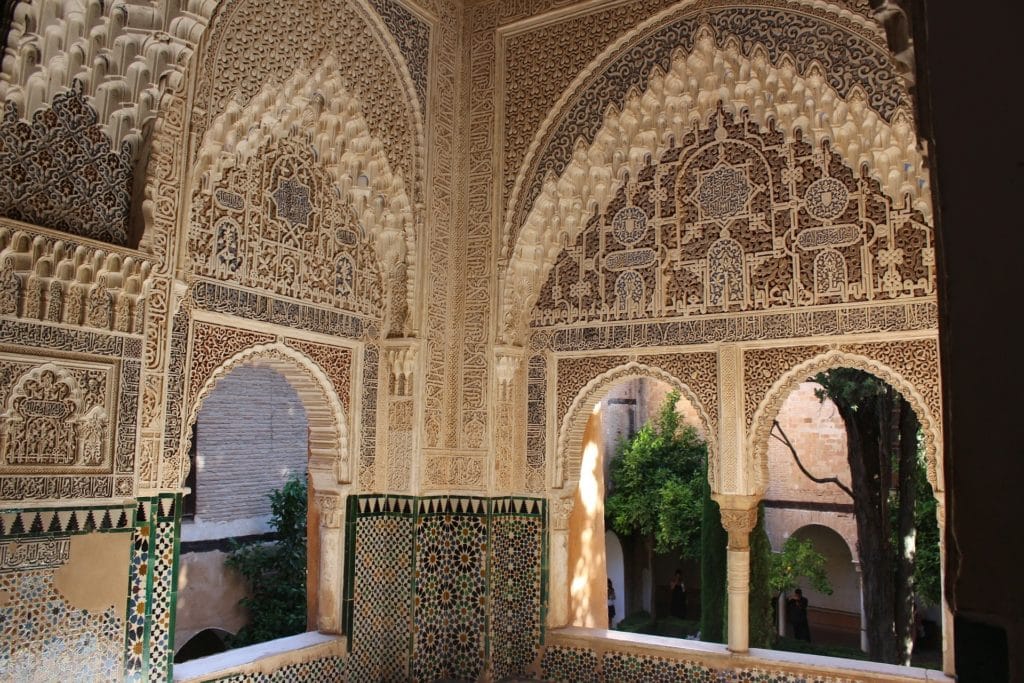
Our next stop is the Courtyard of the Lions, so called because of the fountain in the centre, which rests on the back of twelve carved lions, shooting jets of water out of their mouths. It was a wonder in its time, and there’s a poem carved into the base of the fountain praising its beauty and the ingenuity of its construction. A translation is printed in this leaflet that I have in my hand- I can read you a bit of it, if you like?
May The One who granted the imam Mohammed
with the beautiful idea to decorate his mansions be blessed.
For, are there not in this garden wonders
that God has made incomparable in their beauty,
and a sculpture of pearls with a transparent light,
the borders of which are trimmed with seed pearl?
Lovely, isn’t it? There’s something very special about hearing voices from the past describe their surroundings in their own words.
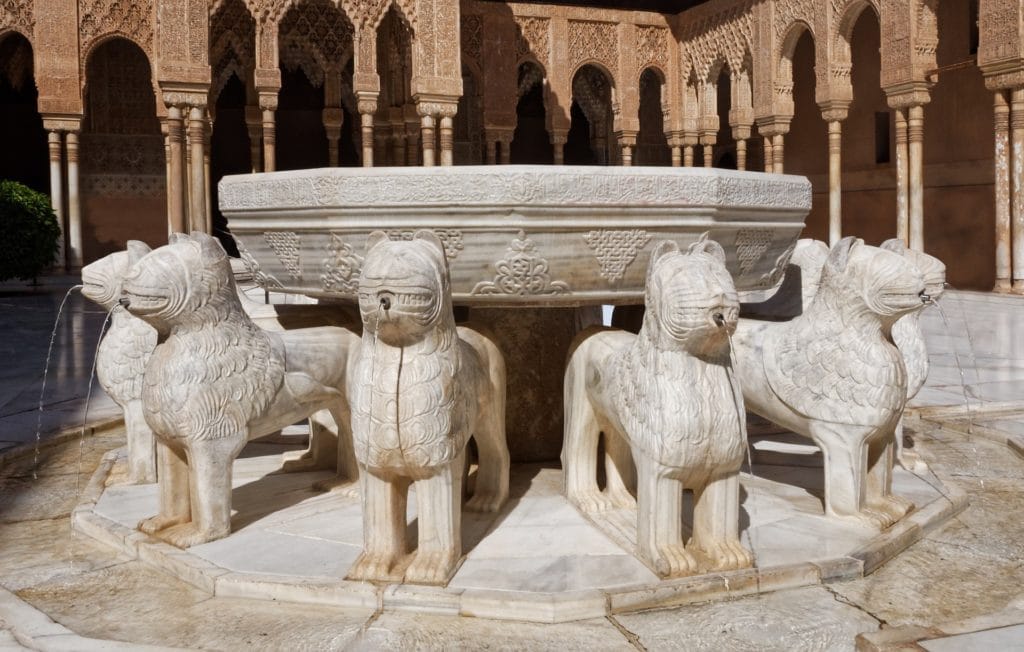
Finally we leave the main palace complex to come out onto the generalife, a smaller, quieter summer palace, set in acres of gardens. This is where the sultan went to get away from it all, and this is where the most beautiful part of the Alhambra grounds are. There are still hours of quiet contemplation to be found in strolling through these gardens, full of shady green spots and fountains. It is the hottest part of the day now, though, and the sun is beating down fiercely, so perhaps we should stop for a quick break in the shade and a cooling drink of water. We’ll end the official part of our walk here, I think. After the break we can all wonder around on our own to have a look at the parts of the gardens that catch our attention the most. I hope you’ve enjoyed our walk this week- and see you next week for another walk!
